Frequently Asked Questions about Agile Account-Based Marketing
We have compiled a list of questions, even doubts and objections about Agile ABM. Feel free to ask us anything that is unanswered here.

What’s the philosophy behind the technology of the most successful ABM programs? Answering this question was not the original intent when we set out to read all the books on account-based marketing. But, I ended up studying (and finding an answer to) this question. I’ll explain why this seemingly philosophical question is highly relevant when choosing an ABM platform, or even a strategy.
As I mentioned, this article - originally intended to be a book review - turned out to be something much more practical and exciting: it is a brain scan of the masterminds behind today’s leading ABM platforms. Reading this article, we hope that you’ll learn what each system is best geared for, and how they approach ABM. It’s an exciting journey, one that had many unexpected turns.
We were interested in finding out what books are available to explain the sometimes counterintuitive process of account-based marketing. The first interesting conclusion is that there are not too many books that deal specifically with account-based marketing. That said, several topics are closely related or whose topics form parts of the ABM process. One example is buyer personas (see our deep dive on an excellent buyer persona research resource here).
Of the handful of ABM books, the ones that have significant readership on Amazon are all written by ABM technology platforms.
On the one hand, no; account-based marketing is a tech-heavy endeavor and well-established tech companies usually have the audience and the budget to get their message - and books - out to a wide audience. The ABM books on Amazon with the most reviews (and highest ratings) have all been authored by founders/leaders of the three most advanced ABM platforms: Demandbase, 6sense, and Terminus.
On the other hand, the scarcity of books on the subject is a surprise because ABM as a practice has been around since forever... and as a concept and a system, it is almost two decades old. We dove into the three prominent books to be found on Amazon (of about 5-6 ABM books in total).
We read them to find out whether they are good - and as we did, we figured they are best geared to present the ABM philosophy of each platform.
Whenever a software company writes a book about their area of expertise, you can be suspicious that it ends up essentially being a pitch-a-thon for their approach and product. But, for these three books, the good news is that they hardly even mention their platform, nor do they try to sneakily convey that the only way to do ABM is what they are doing.
What the books do give the reader is the underlying semantics of how ABM is best done in their experience. Reading these books helps determine whether a given platform’s approach or “ideology” aligns with your ABM philosophy and gives an idea of the vision they have for the future.
From a DemandGen Report interview with John Eitel & Kelly Hopping:
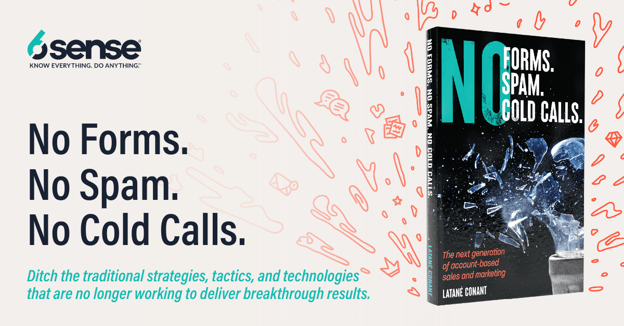
The author is the CMO of 6sense and she starts out by pointing out that marketing and sales have entered a new era. A major part of the preconception is that the track of “business as usual” in B2B sales and marketing is one of diminishing returns. What the author (and presumably 6sense) has in mind is a new track that is centered around a customer-driven experience. This new approach is enabled by super-deep insight; as the author notes, never in the history of marketing and sales have we had so much data and information on customers, intents and insight.
What is really encouraging and almost exemplary is that Conant is looking to convert this insight, this new superpower that technology and AI give us - into better customer- and buyer-experience. Her thinking goes beyond just “more leads” or “higher ROI” and is going for the ultimate jackpot in business, which is customer experience.
When the topic of better customer insight comes up, sales and marketing usually focus on more targeted ads and higher efficiency - which is the right thing to do... But the mindset that dominates this book is that you use your superpowers, first and foremost, for a better pre-purchase- and purchase-experience.
This is smart not just because focusing on a better customer experience ends up making all of marketing and sales better (as in, higher ROI) but also because customers nowadays expect more. Not just consumers but enterprise buyers too. The message conveyed is that at the end of the day, ABM and all the technology and smarts that go into it, should ultimately end up serving customer experience.
6sense advocates a customer first approach where the vendor is actually empowering the buyer by helping them avoid funnels with forms, which everybody hates. There is research indicating that high-level B2B buyers like to remain invisible in the early stages of the purchasing process, so “making their lives harder” by gating content with forms doesn’t serve anybody’s interest.
In addition, 6sense introduces the term “The Dark Funnel” - which refers to buyers doing most of their research away from digital properties owned by the vendor, and with wanting to remain anonymous as an added challenge, marketers are left with little data to work with in the initial stages of buyer research. Buyers nowadays, according to Conant, are only “stepping into the light” when they are ready for a product demo or some deeper engagement with a vendor. By this time they are past the level of intent what many companies classify to be the MQL stage.
The book proposes the following process for doing sales and marketing :
This book is great at presenting a promising, customer-focused vision of how sales and marketing should evolve, and it follows the theory with down-to-earth processes and numbers with actual cases. This (chapter 4) is arguably the most valuable part of the book.
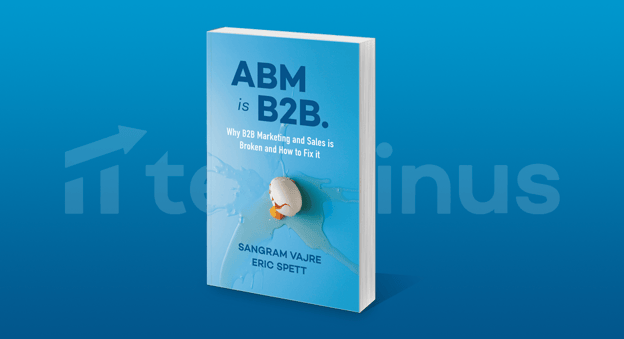
The title says quite a lot about the vision of Terminus’ co-founder, Sangram Vajre: account-based is how all B2B marketing and sales are expected to be done in five years. He even mentions on a podcast episode that the term ABM will dissolve over the years, because “account-based” will be self-evident in B2B marketing.
As an argument for B2B marketing having to be account-based, the authors reference Seth Godin in that “it’s easy for us to think we live in this mass-market world, but we don’t. We live in a micro-market world.”
Then they go on to demonstrate “7 Marketing and Sales Truths that will make your head spin”. These are the axioms that give ground to the ABM framework introduced later in the book. These seven truths are as follows:
Truth 1: The value of marketing is defined by sales.
Truth 2: Your silos should burn to the ground
Truth 3: The buck stops at your CEO
Truth 4: Your vanity is making your marketing ugly
Truth 5: Strategy eats your tactics for breakfast
Truth 6: You can’t bench-press 500 pounds on day 1
Truth 7: Some accounts deserve champagne, others sparkling water.
The first “truth” is a major theme in progressive B2B marketing and is present in the other two books surveyed. What it means is that marketing should be accountable for revenue contribution. What follows is the recurring thesis that “MQLs are irrelevant”. This is directly related to truth #4, which is that emphasis on vanity metrics such as page views, video plays, and form-fills (and MQLs, for that matter) are distracting the organization from relevant insight and the “real” metrics, which are all centered around revenue (see truth #1).
The second statement on silos refers to sales-marketing alignment, also a common theme in ABM literature. The buck stopping at the CEO (truth #3) is about demonstrating the value of ABM to the C-suite and speaking their language (which is: revenue).
Truths 5-7 relate to execution: The importance of strategy before tactics, starting small, and differentiating accounts based on importance. The section following the truths gives short overviews/case studies of several companies’ ABM journey - quite a useful section as well.
Having laid the foundation for the framework with the Seven Truths, the authors then go on to discuss their “battle plan” - their framework for creating and executing ABM programs. At its core, it isn’t very different from other ABM programs, such as the ones mentioned in the other books we’re reviewing. What makes this book’s framework stand out is that it even links to a detailed worksheet on Terminus’ website (ungated, of course) that can be used to architect an ABM program.
The Terminus Framework for ABM
Terminus’ framework is TEAM, standing for target, engagement, activation, and measuring. Its components are illustrated in the below mindmap:
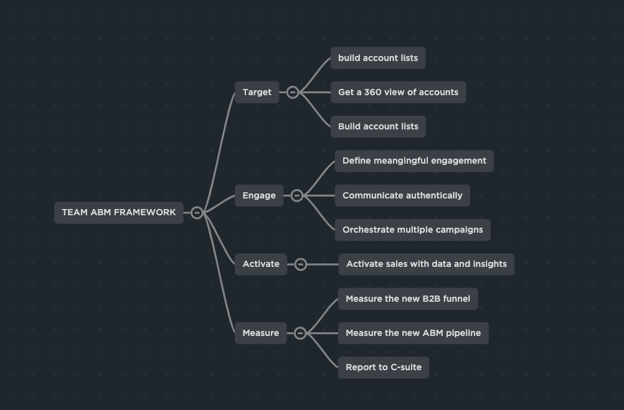
As mentioned above, Terminus provides a handy step-by-step ABM workbook on its website to lead one through the steps.
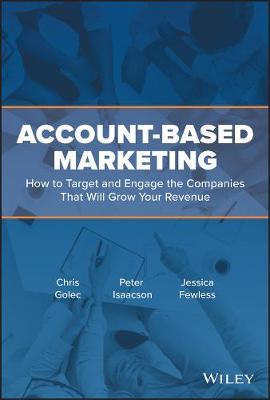 This book by Demandbase’s founder and top-level management differs from the other two books in that this is what comes closest to an “ABM textbook” - a handbook that one can follow linearly from the first page to the last. The handbook "classification" also means that this book lacks a vision- and mindset component. It is less visionary and makes little effort to sell the concept of ABM. This was meant to be a practical handbook, whereas the other two books have a passionate, visionary component (while also delivering on the “how-to” side).
This book by Demandbase’s founder and top-level management differs from the other two books in that this is what comes closest to an “ABM textbook” - a handbook that one can follow linearly from the first page to the last. The handbook "classification" also means that this book lacks a vision- and mindset component. It is less visionary and makes little effort to sell the concept of ABM. This was meant to be a practical handbook, whereas the other two books have a passionate, visionary component (while also delivering on the “how-to” side).
The forte of Demandbase’s book Account-Based Marketing is that it introduces the complete toolset that ABM uses; the authors go into non-ABM topics like webinar-hosting best practices, email marketing smarts, and social- and field marketing. Naturally, all these tools are put in an ABM context.
Demandbase uses a 6-component approach to illustrate parts of the ABM system, or the “Six areas of focus for ABM across your sales funnel” (image from the book):
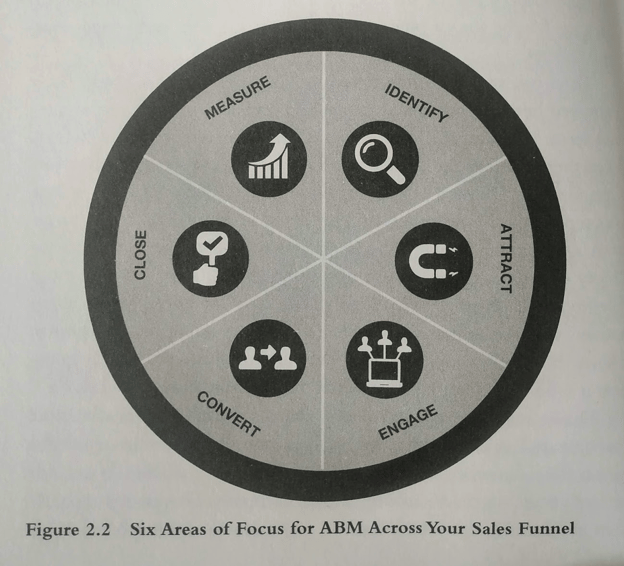
Curiously, this figure is depicted as a flywheel, an ever-revolving cycle - whereas the other two books depict their ABM process as a linear affair. Perhaps the flywheel stands closer to the true nature of the business.
On our behalf, there are no favorites among these three books. Anyone serious about ABM should study all four, but we do want to mention what stuck out as key takeaways and major strengths of each one:
All of the books emphasize the importance of personalness and human connection. As ABM platform providers, these authors advocate technology to provide 1:1 experiences at scale. This is where Infinityn comes into the picture in ABM plays. There are key accounts, where the AI-enabled insights and 1:1 experience provided by technology have to be supplemented by human talent; in other words, people and real conversations have to be looped into the process. The question is: how... and at which point?
Infinityn is an ABX agency that understands and sits on both the marketing and the sales side of the proverbial fence (hello, alignment!). When working with clients, we go deep on understanding both the marketing, as well as the sales-development plays. You will then get ideas on where strategically placed human outreach will have the greatest impact on your highest-value accounts.
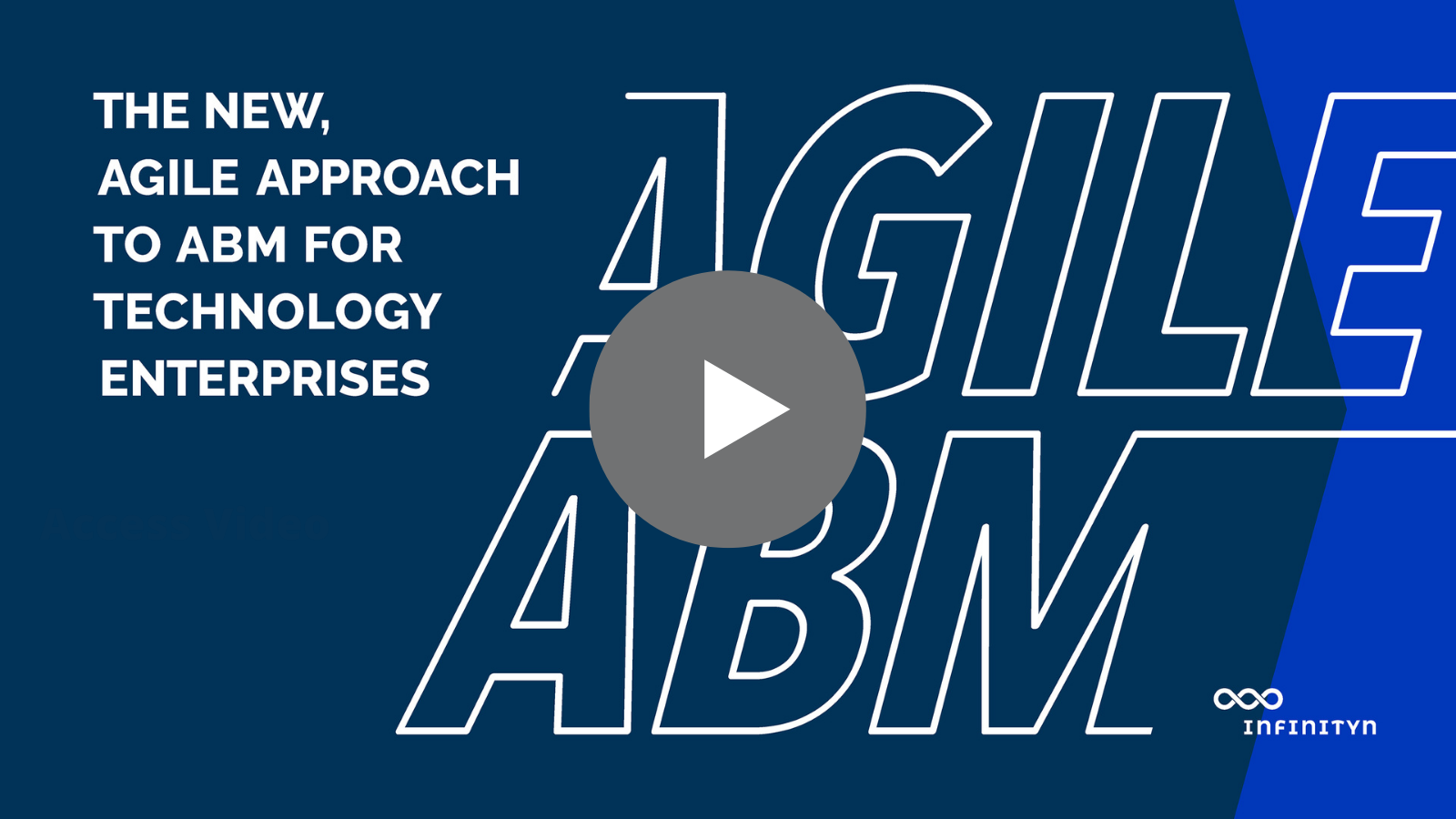
We have compiled a list of questions, even doubts and objections about Agile ABM. Feel free to ask us anything that is unanswered here.

What we call agile account-based marketing (AABM), is a newly emerging discipline. As such, the industry of marketing service providers - agencies...
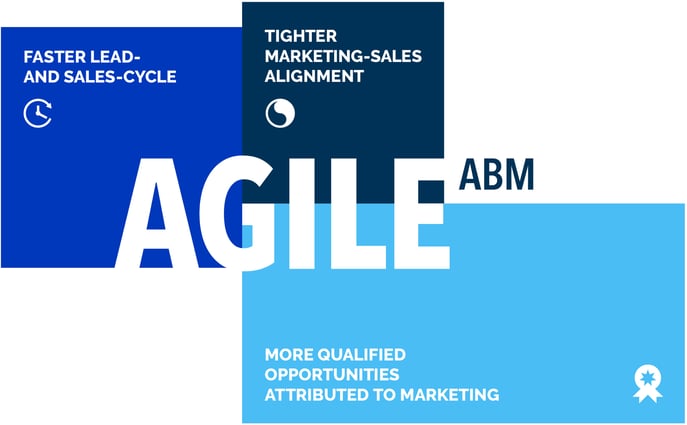
Account-based marketing is going agile Account-based marketing (ABM) has been the go-to approach for enterprise technology in the past decades, even...

Evolving the SDR Role The business landscape is in constant flux, and with it, the role of the Sales Development Representative (SDR) must evolve. As...
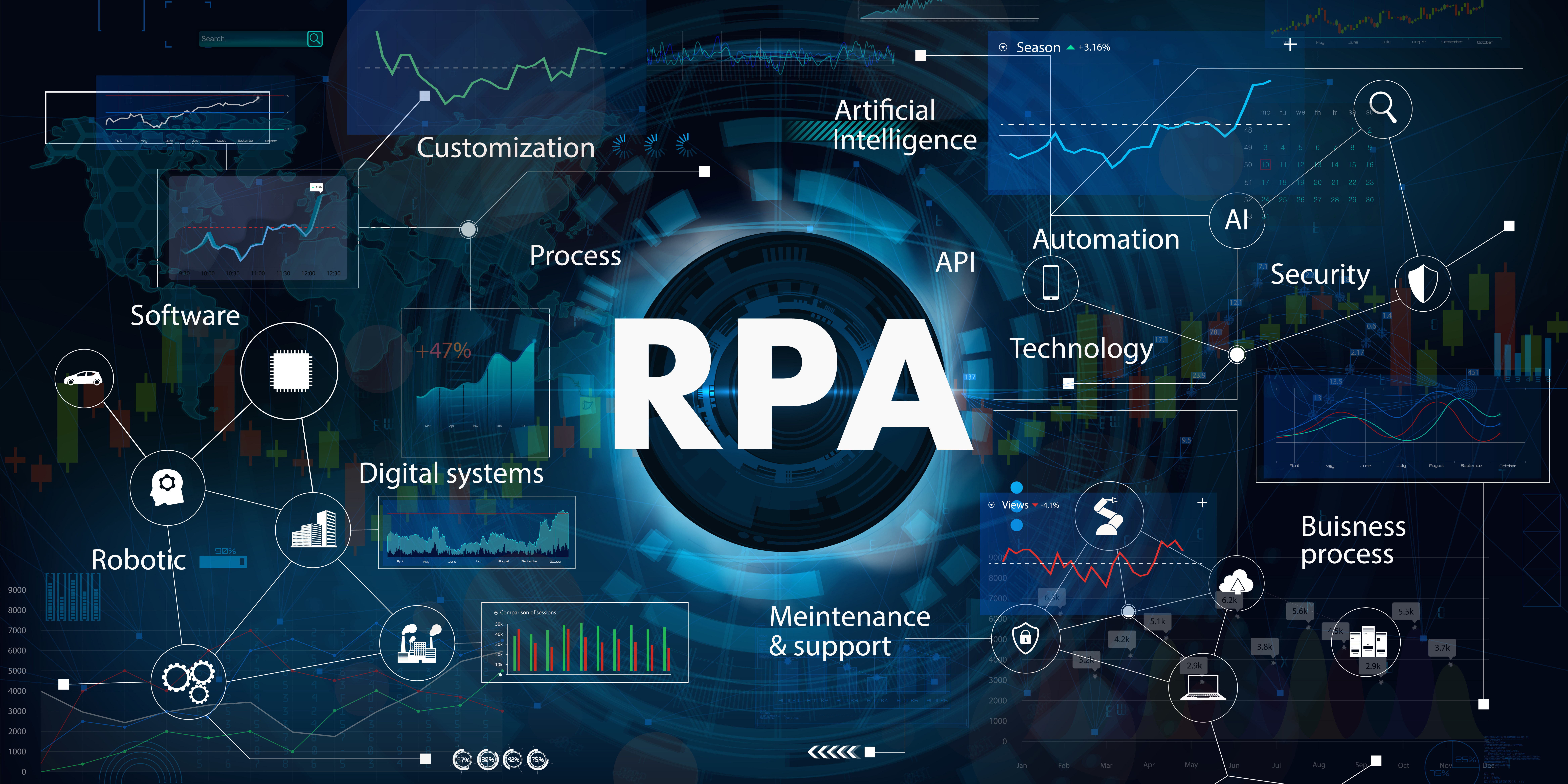
Helping your future customers advance from RPA initiative to great ROI By Kyle Hansen & Yuriy Koshulap
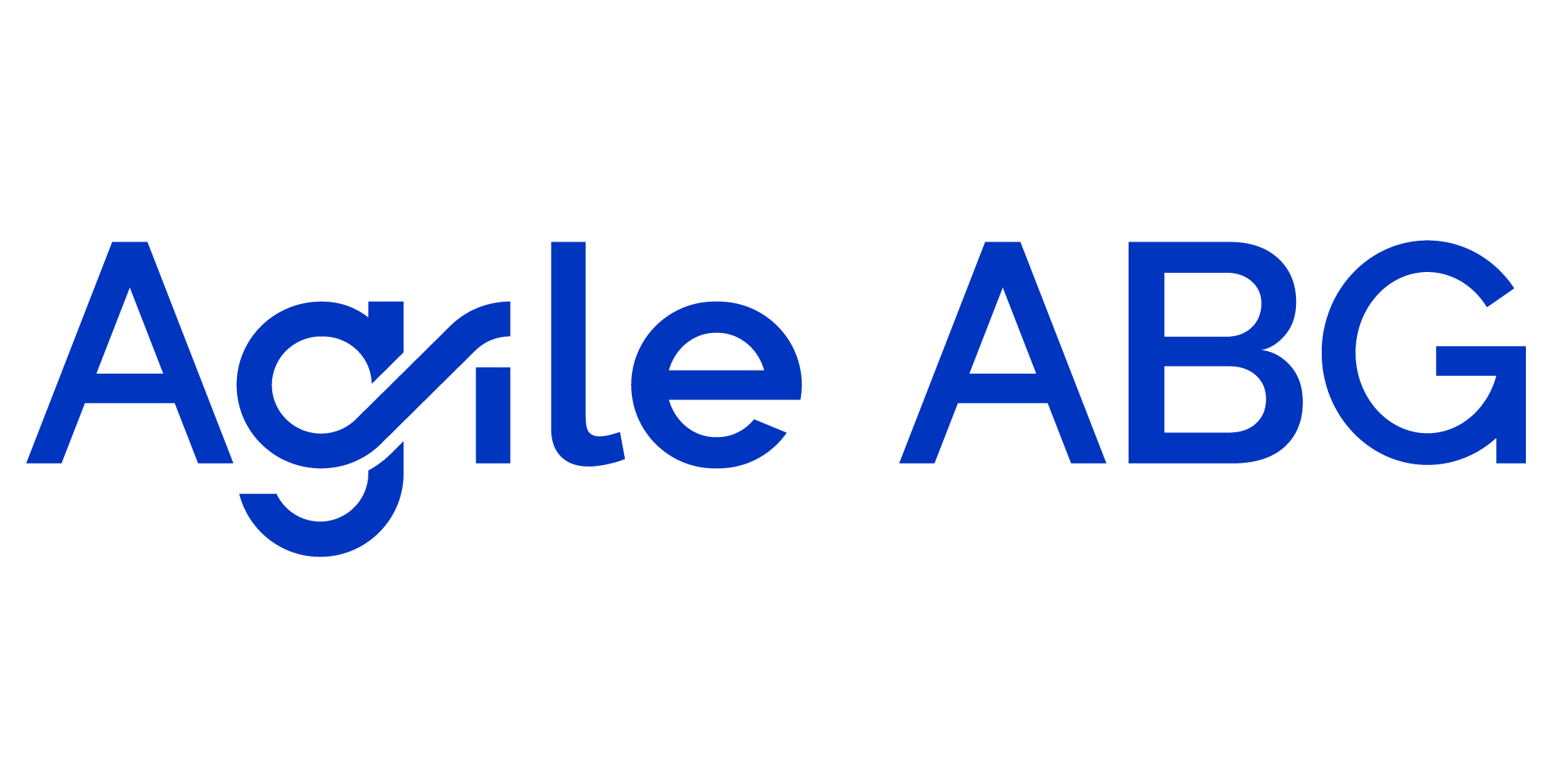
TOPO’s “2019 ACCOUNT BASED BENCHMARK REPORT” – which included 150 account-based organizations - showed that every participant reached or exceeded a...

If you’ve clicked on this article, there’s a fair chance you are considering outsourcing your sales, marketing, customer success and overall revenue...
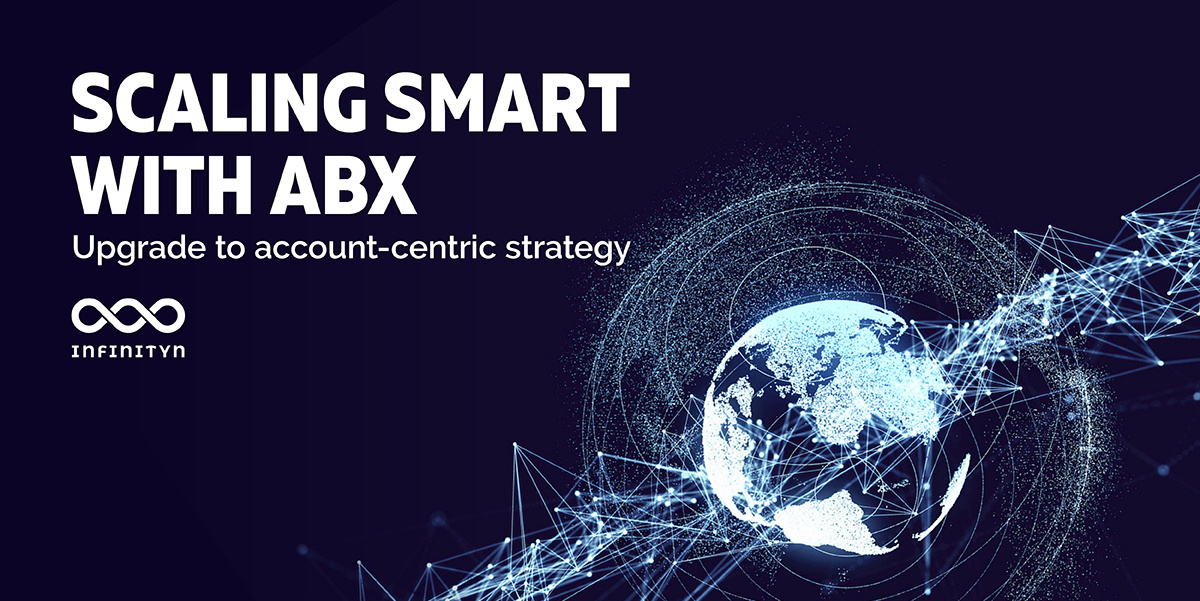 Read More
Read More

Strategic Investment in Technology In the ever-evolving landscape of business, the journey from product ideation to market success is riddled with...

The business world is shaken by the repercussions of current events and those in the near past. With our economic conditions becoming more and more...

The industrial sector seems to experience major lags regarding digitalization and automation – the latest trend that is currently defining the...

X-Factors to look for when Choosing a 3rd Party Vendor Opening the doors to new business is a critical stage of the sales cycle, particularly within...